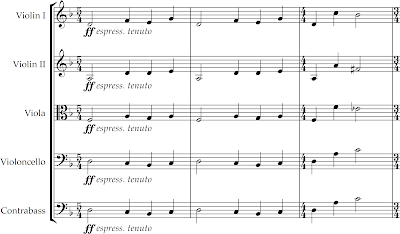DCCCXLIII. SHOSTAKOVICH, Dmitri (1906-1975)
Symphony #12 in D Minor ("The Year of 1917"), Op. 112 (1961)
1. Revolutionary Petrograd -- Moderato -- Allegro -- Più mosso -- Allegro
2. Razliv -- Allegro (L'istesso tempo) -- Adagio
3. Aurora -- Adagio (L'istesso tempo) -- Allegro
4. The Dawn of Humanity -- Allegro (L'istesso tempo) -- Allegretto -- Moderato
Mariinsky Orchestra
Valery Gergiev, cond.
(41:40)
"[This symphony] is much more interesting than some people think." -- VG in this preface to the Twelfth.
Very true -- but I remember as a kid when the music library first got the Twelfth, I took home the record and score and felt sorely disappointed. A paean to Lenin? It seemed more like a vague tone poem on its subtitle -- "The Year of 1917."
The Tenth and Eleventh were so great! What happened?
Shostakovich expert Elizabeth Wilson quotes Lev Lebedinsky (a close friend and confidant):
The day before the premiere, he rang me up in a panic. 'Lev Nikolayevich, tomorrow my symphony will be played for the first time. Can you come up to Leningrad?'
He was waiting for me at the hotel. 'I've written a terrible symphony. It's a failure. But I managed to change it.'
'Change what?'
'The whole symphony. I realized that you had been right. They'd crucify me for it because my conception was an obvious caricature of Lenin. Therefore I sat down and wrote another one in three or four days. And it's terrible!'"
A critic wrote that if the Eleventh was "folk music drama," the Twelfth was "folk-heroic epic."
Isaak Glickman:
"He led me into the little room where he slept. He began to cry and sob. Stammering through his tears, he said 'they've been following me and persecuting me.' Khrushchev's entourage was putting pressure on him to join the Party."
All movements are attacca ...
1. Revolutionary Petrograd -- Moderato -- Allegro -- Più mosso -- Allegro
Picturing the general restlessness and frustration of the people, who are looking for a leader. This rather banal theme is a revolutionary song with the text "shame on you, tyrants!"
Then -- remaining in 5/4 -- he ratchets up the tension with that silent fifth beat:
The theme is relentlessly developed and finally dropped down to nothing ...
An eight-bar variant phrase is repeated and developed:
This marcato breaks up the theme:
2. Razliv -- Allegro (L'istesso tempo) -- Adagio
Razliv was Lenin's countryside retreat outside Petrograd.
The music describes the tension and anticipation of war, not some lovely dacha. Perhaps DS really did throw away the "Lenin-portrait" idea and quickly rewrote all this ... we know that he was fast.
The sinuous motif in the lower strings is borrowed from the Eleventh -- French horns play a different motif, but replete with those bars of "sighing" half-steps:
Still rumbling, Shostakovich moves to E-Flat Major, with flute and clarinet playing a riff that will transform into full-blown orchestral color later on:
3. Aurora -- Adagio (L'istesso tempo) -- Allegro
The Aurora was the ship that fired on the Winter Palace, beginning the Revolution.
Same music -- faster -- and made more dramatic with the timpani part:
Broad horns and strings. This theme is Hope.
Finally, he blows the initial (5/4) theme up -- all the brass play it, while the winds and strings and percussion soar and rattle the foundations:






























No comments:
Post a Comment